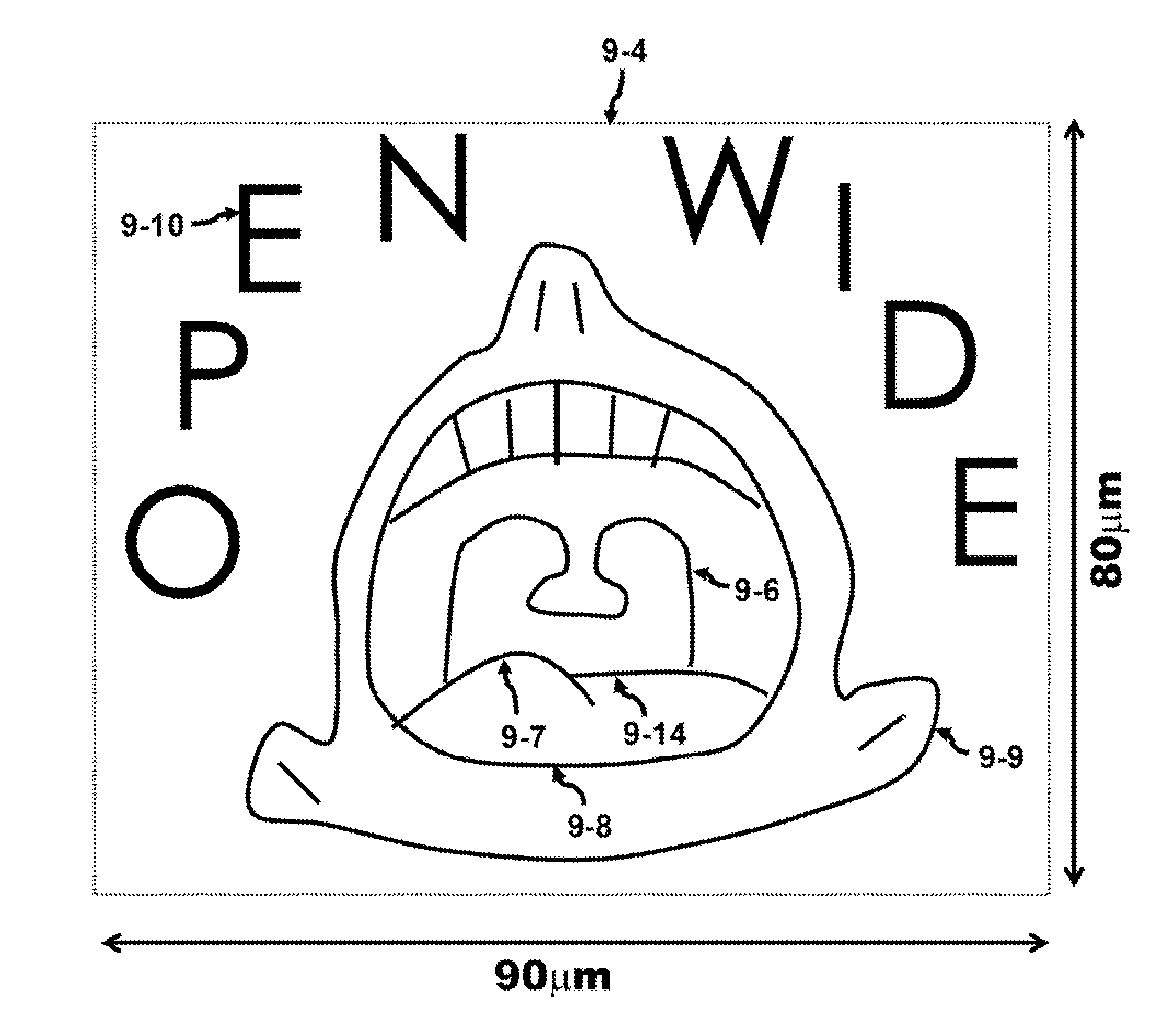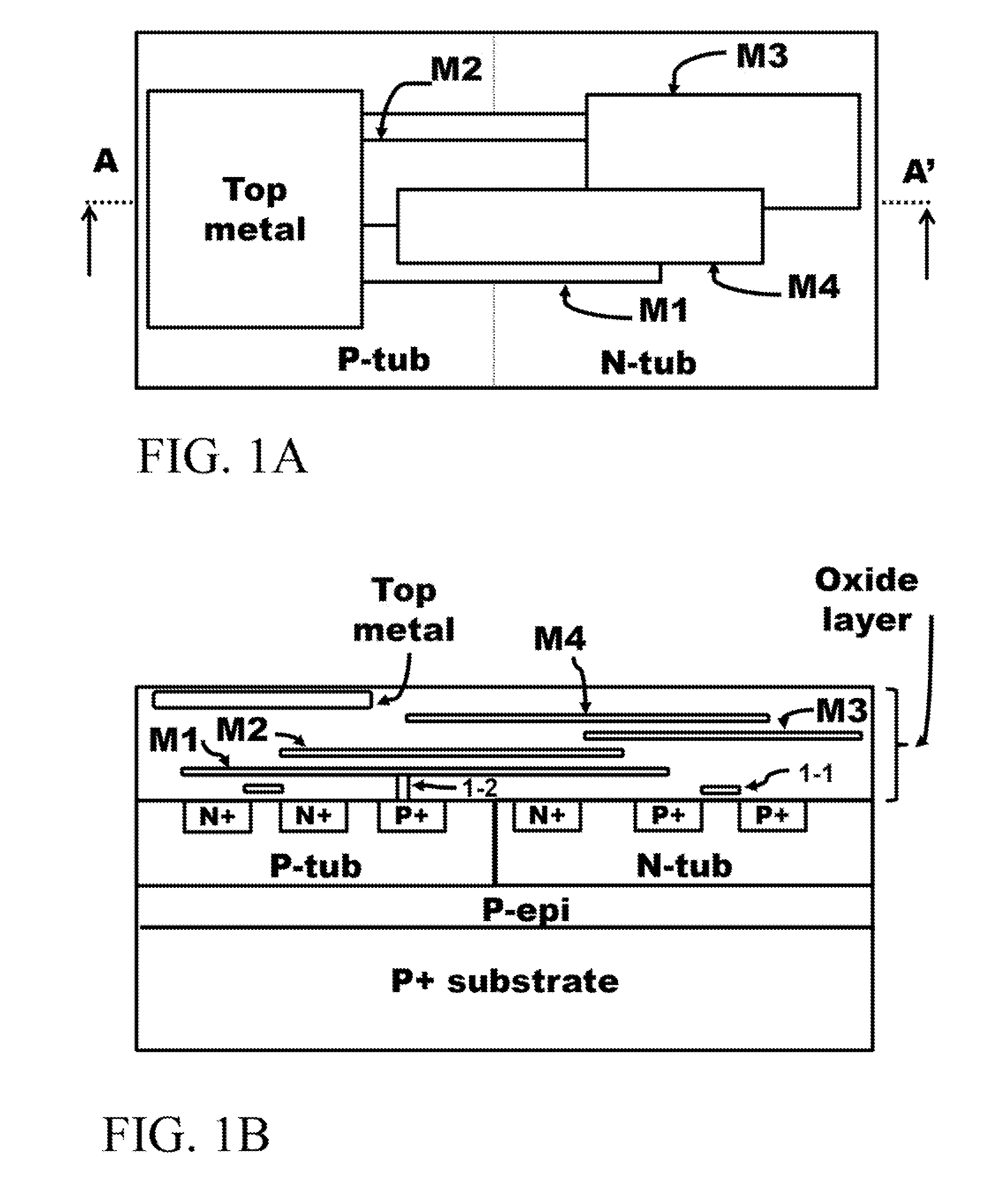Method and Apparatus for Creating and Placing a Micro Message
a micro-message and message technology, applied in electrical equipment, semiconductor devices, semiconductor/solid-state device details, etc., can solve the problems of high manufacturing cost, special equipment is required to fabricate, and the device size and structure of silicon wafer technology has become so small, so as to reduce the size of the transistor, the cost of building the fabs has risen, and the cost of manufacturing facilities is high
- Summary
- Abstract
- Description
- Claims
- Application Information
AI Technical Summary
Benefits of technology
Problems solved by technology
Method used
Image
Examples
Embodiment Construction
[0052]FIG. 1A illustrates a top view of a portion of a silicon wafer. The wafer has N-tub and P-tub doped regions in the substrate. The tubs typically have heavily doped p+ and n+ regions which are used to form tub ties, and define the source / drain regions of a transistor. If the starting substrate is p+, the N-tub can be patterned to form a conductor region. Furthermore, a heavily doped p+ region in an N-tub can be patterned to form another conductor region. Layers of oxide cover the substrate wherein between the layers of oxide, conductive traces are defined. These conductive traces could be formed from materials such as poly-silicon, aluminum, copper, etc. and can conduct electricity. The oxide, typically silicon dioxide but can be silicon nitride, is a non-conductor or insulator and does not conduct electricity. Two adjacent but not touching conductive traces are not electrically connected since an oxide separates the two conductive traces.
[0053]These conductive traces are usual...
PUM
 Login to View More
Login to View More Abstract
Description
Claims
Application Information
 Login to View More
Login to View More - R&D
- Intellectual Property
- Life Sciences
- Materials
- Tech Scout
- Unparalleled Data Quality
- Higher Quality Content
- 60% Fewer Hallucinations
Browse by: Latest US Patents, China's latest patents, Technical Efficacy Thesaurus, Application Domain, Technology Topic, Popular Technical Reports.
© 2025 PatSnap. All rights reserved.Legal|Privacy policy|Modern Slavery Act Transparency Statement|Sitemap|About US| Contact US: help@patsnap.com



